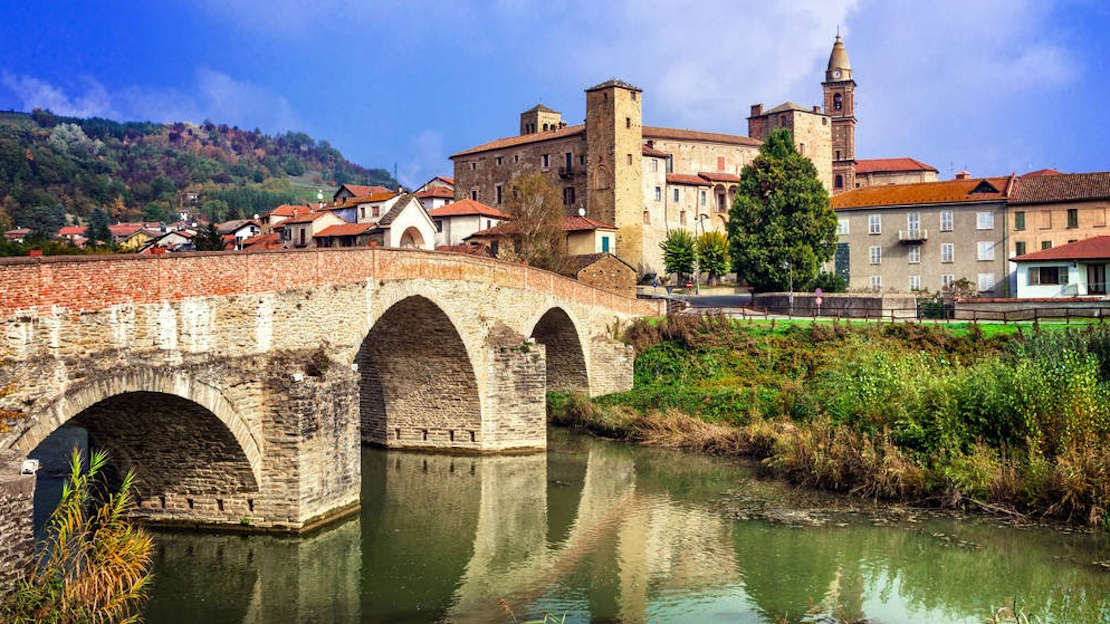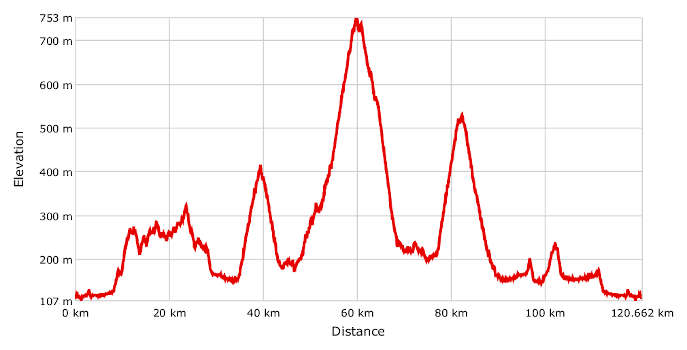
- Bike: strada/trekking
- Difficulty: ***
- Distance: 120 km
- Altitude difference: 1994 m
- Total ascent: 1994 m
- Total descent: 1994 m

'Astilanga to Pavesiana' is the route for the mediofondo bike race organised by the Asti cycling club Società Ciclistica Dopolavoro Ferroviario (SCLDF). It unwinds through the southern part of the province, on the roads between the Monferrato and the Langhe regions beloved by and still named after the famous author Cesare Pavese, born in Santo Stefano Belbo on 9 September 1908.
The deep bond that the writer felt towards his land is evoked by a quote from The Moon and the Bonfires, published before his suicide in Turin on 27 August 1950: 'A town means not being alone, knowing that in the people, the trees, the soil, there is something of yourself, that even when you’re not there it stays and waits for you.'
To recapture the Piedmont poet's magic descriptions, every year the Asti SCDLF puts on, on the penultimate Sunday of September, a mediofondo ride through the hills that so inspired Cesare Pavese. There are two routes, a short one of 90 km and the long one described here, of 120 km, with its highest point at Roccaverano (760 m above sea level). The mediofondo starts in Asti, by the Ferroviario Asti sports centre at Via al Mulino 5. As the organisers say, 'we take the provincial road that leads to the sea,' so pedal along the first 7 km to Isola d’Asti. The road is level but be careful as it's rather busy. You finally take a left, and a right soon after, towards the village of Repergo, on a quiet countryside road bordered by vineyards, where the climb starts. Cross the Montegrosso d’Asti area, passing through the village of Santo Stefano Canetto and the Costigliole d’Asti area, at the top of the hamlet of Sabbionassi. From here, go right for a brief descent towards Calosso, with its medieval castle and the church of San Martino. This is an area where famous DOCG wines are produced, such as Moscato d'Asti and Barbera d'Asti. At the crossroads, turn left before reaching the town, following a sign for Canelli, where you pass the chapel of San Bovo, from which the small village takes its name, and a hamlet, Piana del Salto. Keep on going and you'll enter the Moasca region; at the junction with the SP 6 turn right, crossing the border of San Marzano Oliveto and reaching Canelli, birthplace of Asti Spumante. Near the railway station turn left and start a 5 km climb, coming to a height of 300 m and reaching Cassinasco and its square tower, built in the 10th century. Here, 40 km in, the mediofondo stops for a rest. You are welcome to do the same and get your breath back in the village. Resume the route and head towards the Bormida valley, reaching Bubbio after a long descent of about 3 km; here is where the two medium routes part. The short route turns right at the SP 25 and goes into town, to meet the long route again in the village of Quartino, near Loazzolo. The long route, which you are following, turns left at the SP 25, towards Monastero Bormida whose castle began as a monastery before becoming a fortress in the 15th century. From here, turn right and start climbing the road to Roccaverano, across the SP 56. The 12 km-long climb has medium slopes, but nonetheless make sure you're ready for it. This is the highest point of the tour. Your reward will be the views at the top. Roccaverano is the capital of the Langa Astigiana region, and its highest town, nestled among woodland, terraced fields, farms and meadows. This is the land of traditional culinary treasures, such as the creamy, solid and velvety robiola cheese, made from the raw milk of goats bred on the surrounding hills. This is the second rest point on the long route, in the historic square with the church of Santa Maria Annunziata, which has a 30 m-high tower and dates back to the Renaissance period. It's certainly worth a break, whether you are doing the route alone or with friends. This is also the half-way point; you now go back down in the valley for 11 km. Before reaching Vesime you pass San Giorgio Scarampi; turn right at the crossroads and after 6 km you come back to the village of Quartino, where the two trails merge again. Here you turn towards Loazzolo, to start a rather demanding climb, a few kilometres long. This municipality consists of a small village, with lovely ancient features, narrow streets enclosed by stone walls, vineyards decked in Moscato grapes as far as the eye can see, a small portion of which are used to make Passito Loazzolo wine, which is perfect with robiola from pure Roccaverano goat's milk. After a climb of about 1 km outside Loazzolo and a descent of about 8 km through vineyards, you reach the town of Canelli. On the left, you can catch glimpses of the valley where the river Belbo runs, and of Santo Stefano Belbo, the town where Cesare Pavese was born. Take the road in the opposite direction until you are close to Moasca where, continuing on the SP 6, you reach the Opessina roundabout. Turn left and then right to reach Agliano, where excellent wine is made. Don't go through the town but past the Terme Fons Salutis instead; their sulphurous waters are recommended for treating disorders of the liver and the digestive and biliary tracts. Pass Montegrosso to return to Isola and pedal along the same level stretch from the beginning of the route, to reach its end point in Asti, where you started.
